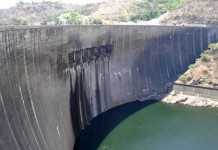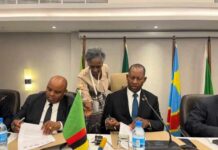DURBAN is burning. This week, much of the city has been smouldering with a seething hatred and the flames of the foreign-owned homes and shops set ablaze. This most recent wave of xenophobic violence began nearly three weeks ago and rages on unabated. To date, several foreign nationals have been murdered in the frenzy and thousands have been displaced. Hundreds of police officers have found themselves overstretched and overrun as they struggle to protect the victims, and battle to disperse and disarm angry crowds.
According to the United Nations Human Rights Commission, in July last year there were about 310,000 refugees and asylum seekers in SA. This number is expected to be more than 330,000 by the end of this year. Most of the asylum seekers are from African countries stricken by war or other crises, including Zimbabwe, Somalia, the Democratic Republic of Congo, Malawi, Eritrea, Somalia, Angola, Burundi, Ethiopia, Mozambique and Rwanda. Whether escaping conflict or seeking better economic conditions, most of them arrive carrying little more than hope for the future and the dream of a better life for their families. Many also bring with them critical skills that they wish to share with South Africans and a motivation to contribute to our society.
The onslaught against foreigners is a stark reminder of the xenophobic riots that swept across SA in 2008, leaving 62 people dead and scores wounded. Those events are seared in our national consciousness with a deep sense of disgrace. Foreign nationals were dragged through the streets and “necklaced”. Thousands of innocent men, women and children with only the clothes on their backs found shelter in churches and mosques, with many living for months in temporary camps. In an instant, SA’s dream of a “Rainbow Nation” went up in smoke, and our proudly multiracial and democratic nation hung its head in shame.
Sadly, not many of the lessons learnt from those events have been put into practice. According to the Consortium for Refugees and Migrants in SA, attacks on foreigners have continued, with statistics indicating that, on average in 2011, one person a week was killed, while 100 were injured and more than 1,000 displaced.
Xenophobia is not unique to SA but is particularly tragic given the history of prejudice and discrimination our people have overcome. As in 2008, those affected are black African foreign nationals, as well as poor and disenfranchised South Africans living predominantly in the townships. In the aftermath of those appalling events, various historical, social and economic factors were cited as the underlying causes. These included apartheid and the legacy of the attitudes it fostered; the rate of socioeconomic inequality; and three factors identified by the Forced Migration Studies Programme as a lack of trusted and effective conflict resolution mechanisms, a culture of impunity among those who attack foreign nationals, and competition for community leadership in which local leaders mobilise residents against foreign nationals in order to strengthen their own power base.
Xenophobia in SA is not just a problem of the poor as negative perceptions of foreigners, especially black African foreigners, are sadly widely held by South Africans of all race groups and …. READ MORE …
• Baranov is a freelance writer and social justice activist based in Durban. She is vice-president of the Council of KwaZulu-Natal Jewry and was a founding member of the Hate Crimes Working Group.
BY ALANA BARANOV
http://www.bdlive.co.za/
Photo: AFP PHOTO / STRINGER

 JOIN DRIVERN TAXI AS PARTNER DRIVER TODAY!
JOIN DRIVERN TAXI AS PARTNER DRIVER TODAY!











